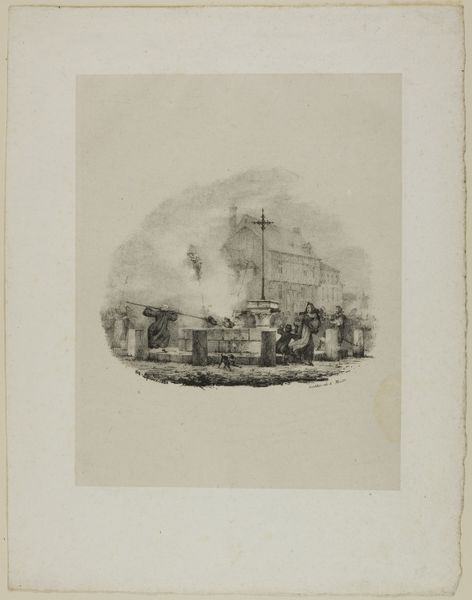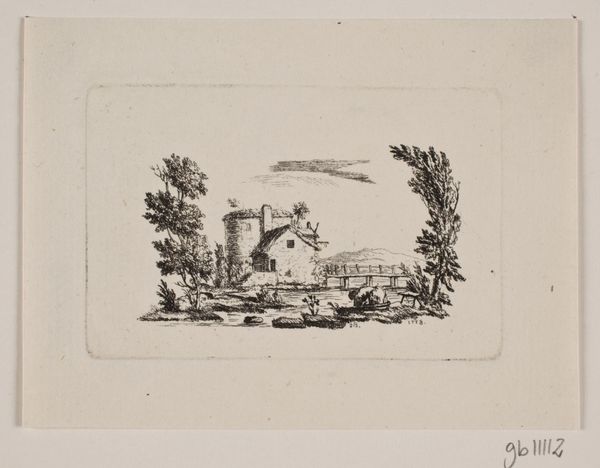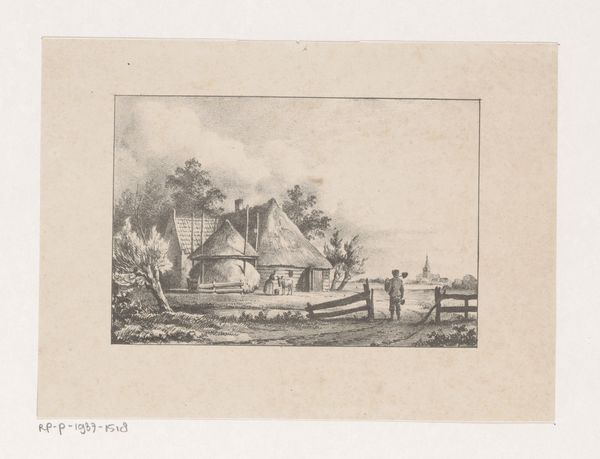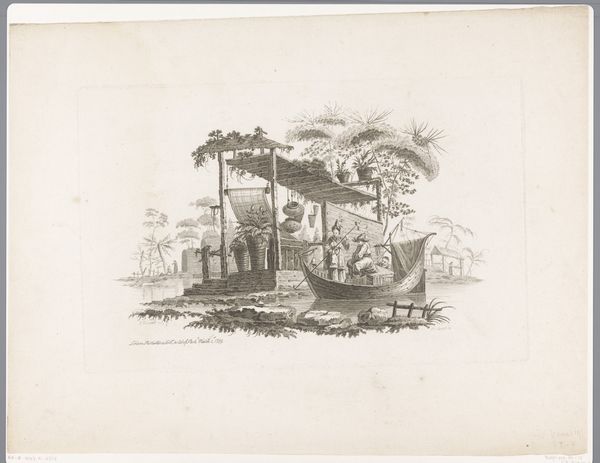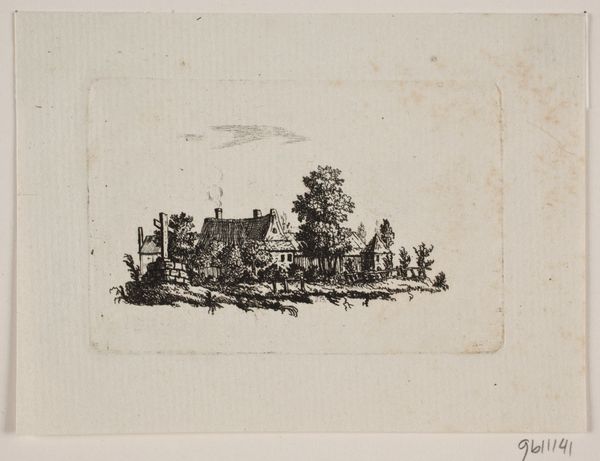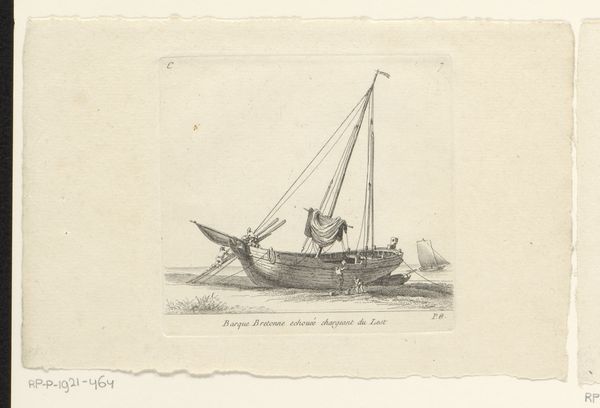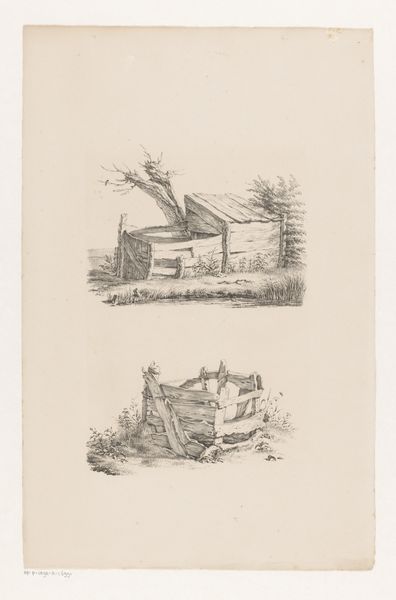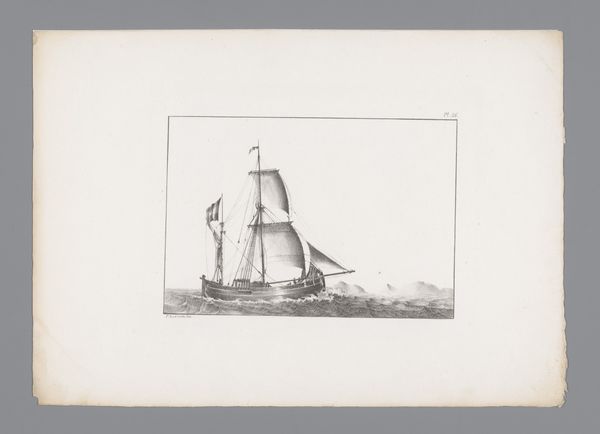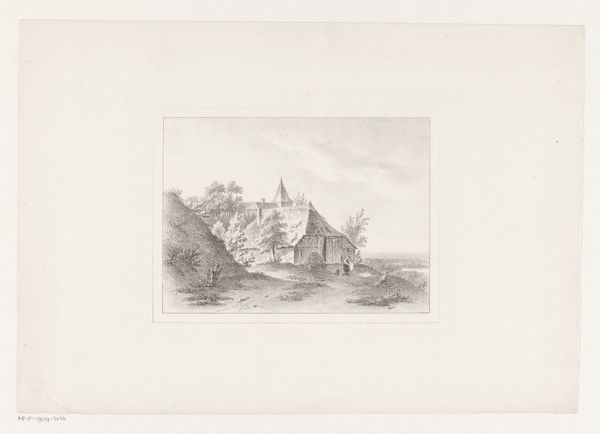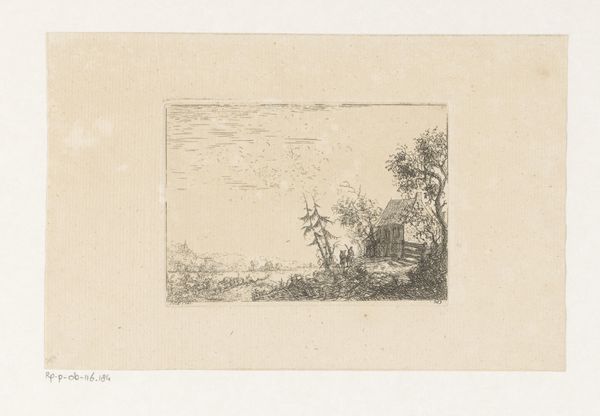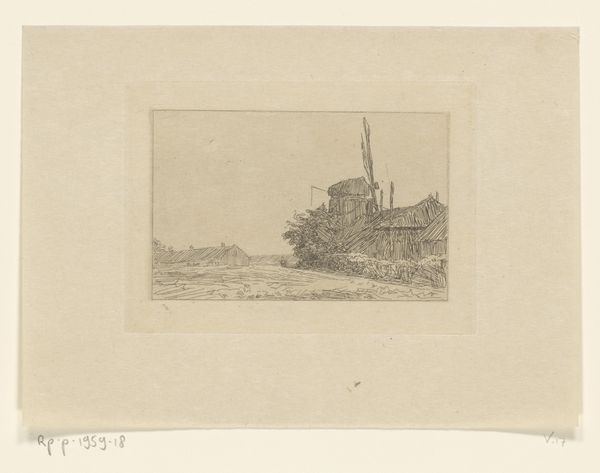
Dimensions: 52 mm (height) x 78 mm (width) (plademaal)
Editor: This is Johan Bülow's "Vignette," made in 1778, using etching, drawing and printmaking techniques. It's so delicate and precise! What strikes me is the odd juxtaposition of objects – what do you see in this piece that I might be missing? Curator: I see a material statement about artistic production in the late 18th century. Etching, a printmaking process, democratized image production. Think about the materials – the copper plate, the acid, the paper, the press. It’s about reproduction and consumption on a new scale. Editor: Reproduction? But what about the image itself, the ruins, the anchor… that melancholy vibe? Curator: That melancholy vibe you're picking up on certainly connects with Romanticism. But I'm curious about *how* that melancholy is conveyed. Etching allowed artists to create these easily circulated, and somewhat affordable, melancholic scenes for a growing market. Consider the role of labor in creating both the image, but also reproducing it many times over. What kind of social statement are these prints making? Editor: So, it’s less about what the image depicts and more about the process of making and distributing it? Curator: Exactly! The means of production directly impacts consumption. People had access to images and ideas in a new way, influencing how they perceived things like "ruins" or "melancholy". The line between high art and craft blurs when we consider the material realities of its creation. Editor: That’s a fascinating way to look at it. I was so focused on the image, I didn’t even consider the implications of its medium! Curator: Paying attention to the means and modes of creation always enriches our understanding. Editor: Thanks for making me reconsider art from such a hands-on perspective. I see this little etching in a completely new way.
Comments
No comments
Be the first to comment and join the conversation on the ultimate creative platform.
